Delftware, around since the early 17th century, has achieved remarkable staying power by reinventing itself and appearing in new and new-ish forms every few years.
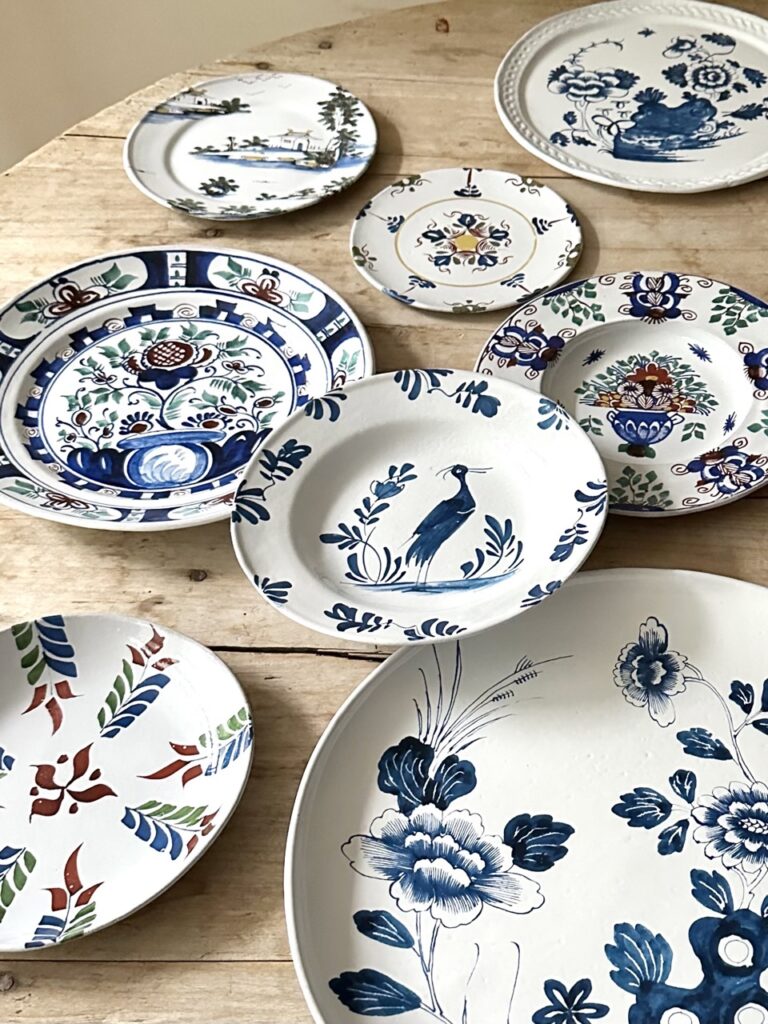
John Derian’s delftware for Astier deVilatte.
Blue and White Delftware Makes Its Comeback
Delft was something of a chameleon from the beginning, and a few centuries of protean adaptability have cemented it in our visual culture. Originally cobalt blue on a white background and based largely on Chinese Ming dynasty patterns, it has depicted pastoral scenes, animals, floral motifs, and more. Following Golden Age Dutch trendsetters, English and French ceramists added their own versions of blue and white to the canon. As the decades ticked by, a tidal wave of blue and white swept into homes across several continents. While the popularity of blue and white arguably ebbs and flows, it never disappears.
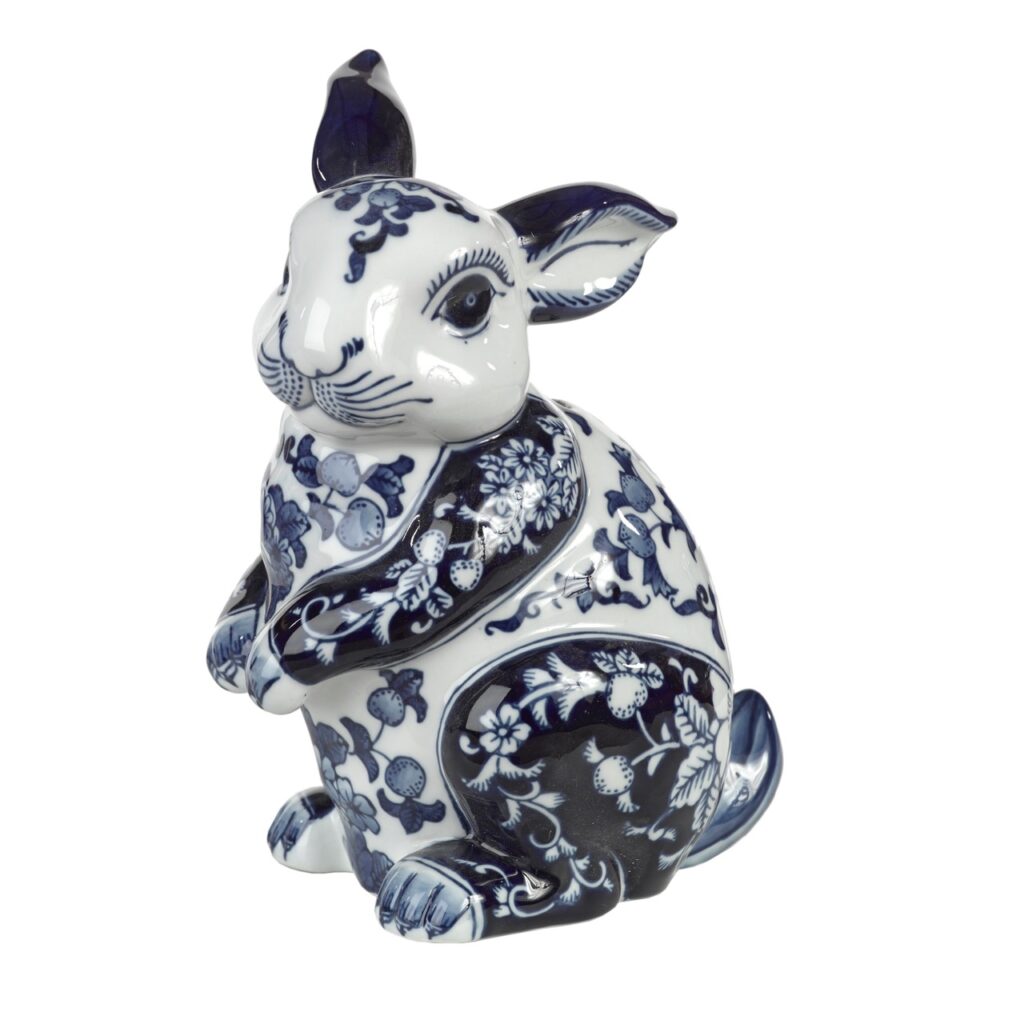
Rabbit Piggy Bank by Polspotten.
Returning to the Shelves of Today
In Paris during January 2025’s Maison et Objet, there were clear signs of a resurgence of interest. Many new and eye-catching interpretations were on offer, including some intriguing pieces from New Zealand-based Seletti, in a collaboration with Diesel Living, that were intentionally warped, cleverly named Classics on Acid. Royal Delft, which began in 1653, showed several innovative collections, including two editions by Arian Brekveld, a graduate of the famed Design Academy Eindhoven.
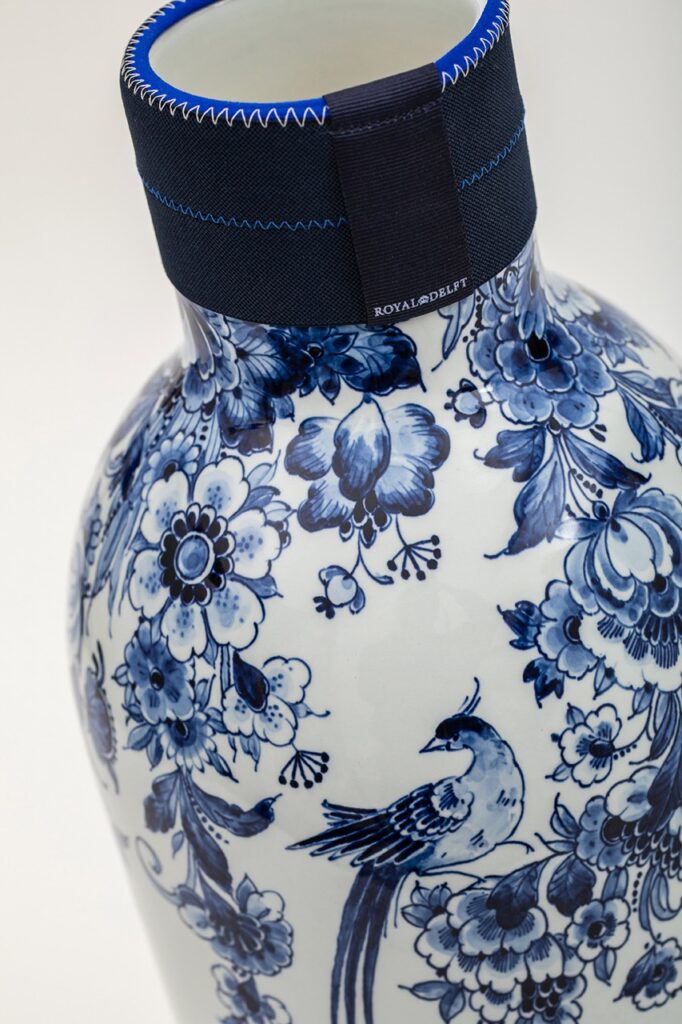
Collar Bottle Blue Edition by Arian Brekveld for Royal Delft.
His Mazzo Blue pieces are based on flowers, the word mazzo being Italian for bouquet. Elaborately painted, petal-shaped ceramic calyxes sit gracefully in plain vases, evoking very full arrangements. (You can remove the flower part and replace with actual flowers if desired.) His Blue Collar Bottles, an ongoing series, are based on“lushly decorated cups and vases that were placed on cabinets and mantelpieces as a testimony to the wealth as well as the good taste of their owners. They were produced by a number of earthenware factories in Delft and are still much in demand as collectibles.”
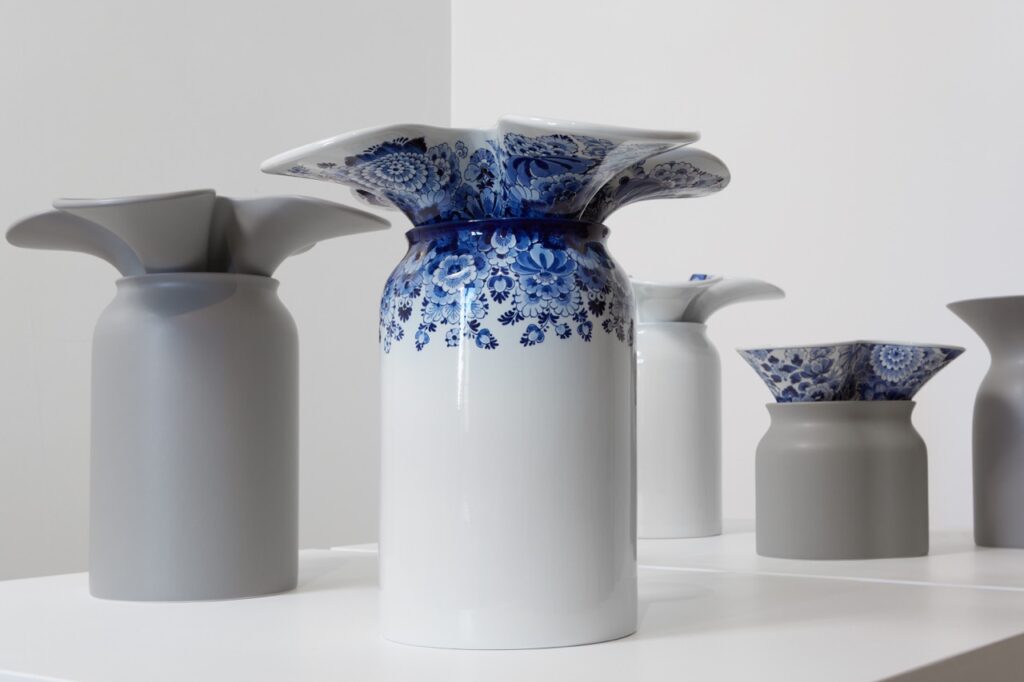
Mazzo Blue vase by Arian Brekveld for Royal Delft.
A New Delftware Collaboration
Closer to home, New York designer John Derian introduced his new Delftware collaboration with the Paris-based atelier Astier de Villatte, with whom he has worked for decades. “I love this period, the designs, the clay color, the weight, and the history. It transports me back to a time when this kind of craftsmanship was at a peak. I think I would have loved to live then.” These new pieces offer a slightly more relaxed take, with designs that look appealingly freehand, in bucolic themes such as blossoms and herons. There are 12 pieces in all, in prices ranging from $122 to $290, inspired by Derian’s own collection of 18th century Dutch and English plates.
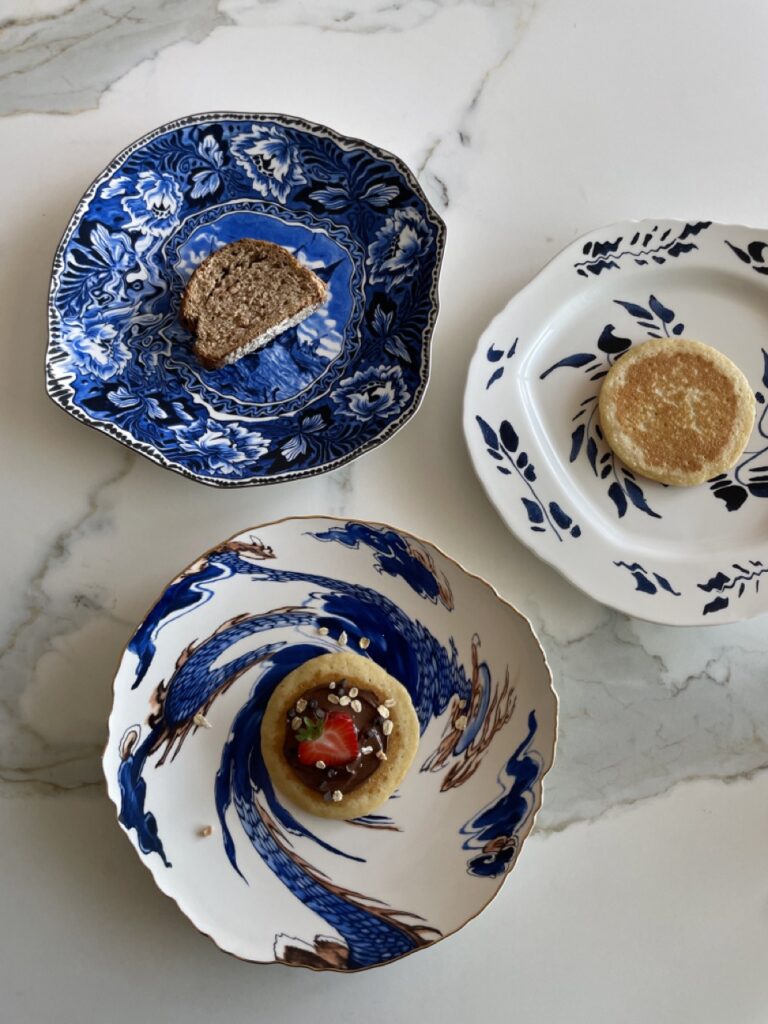
Seletti Classics Acid plates.
“I have some of these antique delft pieces in my own collection, and then I just started seeing some real beauties at a co-op in the Berkshires and shortly after at another antique shop in New Bedford, Massachusetts. The dealer, Oliver Garland, had more to show — I basically became obsessed. I reached out to my friends Benoit and Ivan of Astier de Villatte and they, too, love that period and we were a go! I had my actual plates professionally photographed, we created decals in France, did some testing on different sized plates, and then created the collection. It is one of my favorite collections with them.”
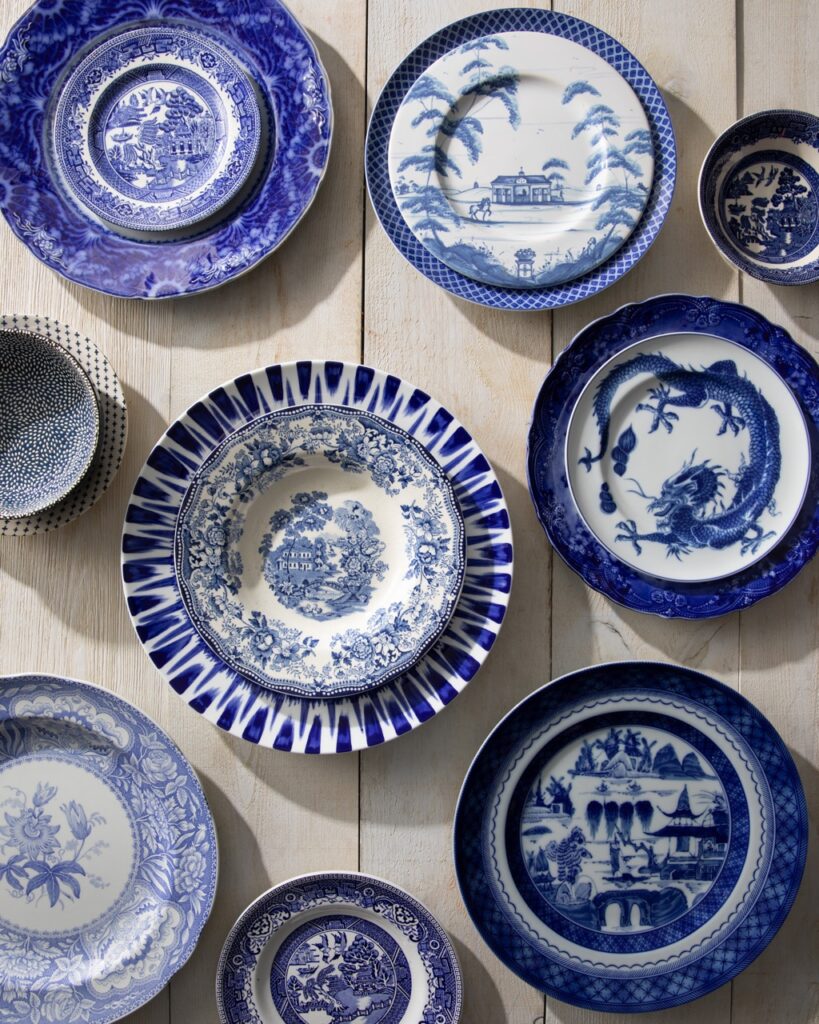
Clockwise from top left: Two vintage plates purchased locally. Juliska Country Estate salad plate resting in Mottahedeh Blue Lace Charger. Vintage Blue Willow bowl. Mottahedeh Blue Dragon salad plate resting in vintage dinner plate. Mottahedeh Blue Canton dinner plate. Vintage Blue Willow bread and butter plate. Vintage floral dinner plate. Two contemporary blue and white plates. Center: Vintage English transfer ware salad plate resting in a Bernardaud In Bloom coupe dinner plate. All Juliska, Mottahedeh and Bernardaud dinnerware courtesy of Glassworks.
Story by Stephen Treffinger
Subscribe to TABLE Magazine’s print edition.
